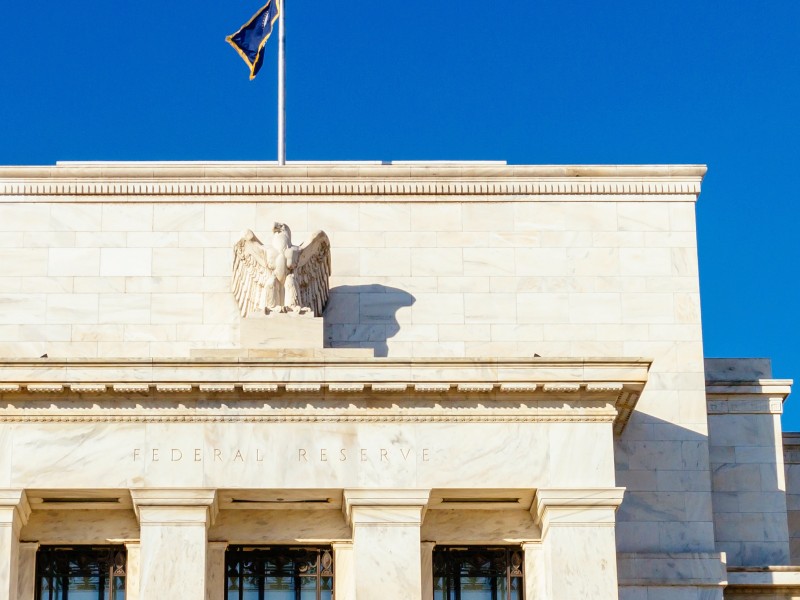
The Federal Reserve announced a significant change Thursday in how it manages interest rates by saying it plans to keep rates near zero even after inflation has exceeded the Fed’s two per cent target level.
The change signifies that the Fed is prepared to tolerate a higher level of inflation than it generally has in the past. And it means that borrowing rates for households and businesses — for everything from auto loans and home mortgages to corporate expansion — will likely remain ultra-low for years to come.
The new goal says that “following periods when inflation has been running persistently below two per cent, appropriate monetary policy will likely aim to achieve inflation moderately above two per cent for some time.”
The new Fed policy underscores its belief that a low jobless rate is critically important for the economy by saying it would seek to assess the “shortfalls” in employment from the maximum level.
In a speech detailing the changes, Chairman Jerome Powell made clear that the policy change reflects the reality that high inflation — once the biggest threat to the economy — no longer appears to pose a serious danger, even when unemployment is low and the economy is growing strongly. Rather, Powell said, the economy has evolved in a way that allows the Fed to keep rates much lower than it otherwise would without igniting price pressures.
“The economy is always evolving,” Powell said. “Our revised statement reflects our appreciation for the benefits of a strong labour market, particularly for many in low- and moderate-income communities and that a robust job market can be sustained without causing an unwelcome increase in inflation.”
In his speech, Powell said that the Fed’s decision to allow unemployment to fall to a 50-year low before the pandemic had played an important role in lifting the fortunes of low-income workers.
The Fed said that the policy changes to its 2012 framework had been approved unanimously by the Fed’s interest-setting panel, the Federal Open Market Committee. Powell said the statement will be reviewed annually.
Powell’s comments came at the Fed’s annual gathering of global central bankers and top economists, normally held in Jackson Hole, Wyoming, against a backdrop of the towering Grand Teton Mountains but this time held virtually because of the pandemic.
The Fed’s goal in revamping its policy stance on inflation is to drive home to borrowers and investors that the Fed’s benchmark rate, which influences many consumer and business loans, will likely stay ultra-low for years to come. What’s new is the message that the Fed is prepared to accept a level of inflation that in the past it would not have tolerated while keeping rates near record lows.
Powell’s speech comes at a perilous time for the economy. Unemployment is still in double digits, and roughly one million people are applying for jobless aid each week even as the amount of aid they receive has shrunk. Consumer confidence has tumbled.
Though the stock market and home sales are surging, the economy is struggling to grow, and millions face potential evictions from their homes. Congress is deadlocked at the moment over how much more assistance to supply on top of the $3 trillion in support it has already approved since the pandemic shutdown the economy in March.
If the impasse cannot be resolved, many economists fear the country could tumble into an even deeper recession.
The chairman’s speech to an annual gathering of central bank officials is normally a hot ticket in the economic world, with coveted invitations going to a select few. This year, the event is being live-streamed to all on the YouTube site of the Federal Reserve Bank of Kansas City, which sponsors it.
Previous Fed chairs, notably Alan Greenspan and Ben Bernanke, sometimes used the Jackson Hole conference to announce major policy initiatives during turbulent economic times, which is one reason why expectations were high that Powell could do the same.
The Fed began its reassessment of its interest-rate policy in November 2019, a process that included town-hall meetings with ordinary Americans around the country so that the policymakers could hear first-hand about the impact of their policies.
The minutes of its most recent policy meeting in late July had prompted speculation that the Fed would formally announce the changes at its next meeting in mid-September. Instead, the FOMC panel unveiled the changes Thursday, and Powell used his speech to explain them.
Right now, the Fed’s preferred inflation gauge is hovering at a sub-one per cent annual rate, well below its two per cent target. Since the two per cent target was officially adopted in 2012, the Fed has never consistently hit that level.
